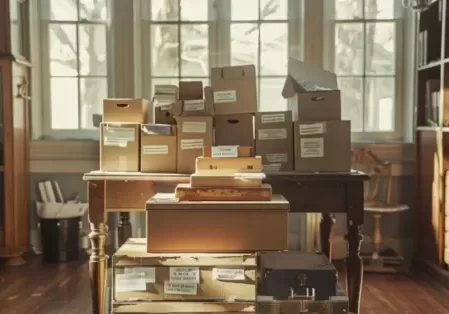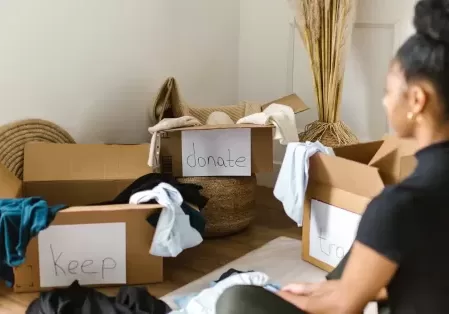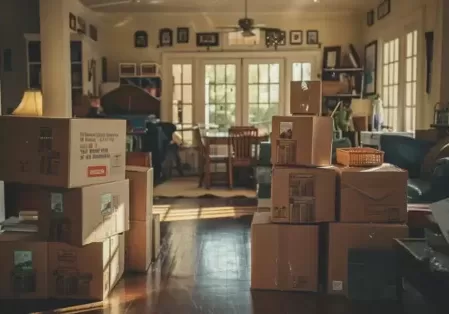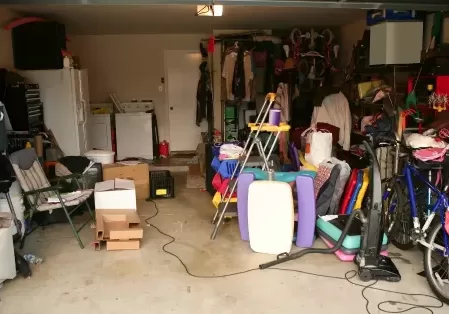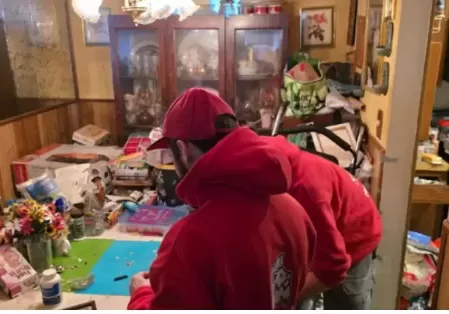The Donation Narration
Recycling: it helps to keep our consciousness clean by telling us that the things we throw away will be used again, making the idea of throwing trash away a little cleaner. But what of the things that can’t be recycled into something new, but don’t necessarily have to be thrown away? What about the toys that your kids barely touched that could be loved by a child who doesn’t have anything of their own to play with? Or the table set that you just bought, making your old, but not ruined, set obsolete?
There is definitely a call to declutter your home and make it new, but oftentimes we must look at these tedious tasks as opportunities to do something good. The holidays are over, but the season of giving goes on for all four seasons. In this publication, we will rediscover why it’s so worth it to sort through the things you no longer want for the purpose of donation rather than automatically casting them out as junk.
Give What You Can, Where You Can
In this economy, it’s hard to be able to donate your own money in order to help those who might need it. It’s just the cold, hard truth. But not having an abundance of money definitely does not mean the absence of philanthropy. Choosing to donate rather than throwing out usable items is the best way to give back even when you don’t really have a lot to give. Just as with any major cleaning job, however, it can be a big assignment to try and sort through the amount of stuff accumulated throughout the years and determine what can be contributed and what needs to be thrown out. It’s also important to understand that even though you have a lot of items to potentially donate, not everyone who’s in the market for a used item wants your clutter, so it’s very important to be sure that everything you decide to donate has practical use.
The good news is, there aren’t a lot of rules to donating unless the things you’ve decided to give away go to a thrift store, so certain guidelines can vary by store. For example, thrift stores will take all the functional books you have to donate, but will probably not take any old magazine collections because of its fragility as opposed to a book, which is sturdier. So long as they are safe, electronics are typically a largely searched item at thrift stores since there is probably someone out there who still listens to vinyl records and watches VHS tapes.
It is good to be mindful of what you donate to thrift stores because they also might not take things that could potentially be rendered as a liability, such as mattresses or childrens’ car seats and strollers or larger toys such as playpens and swingsets. These sorts of donations can be damaged or worn out and have more accountability to be fully functional than old books, clothes, or electronics. Not that every usable item rejected by a thrift store should be thrown out as junk; If the item is fully functional in its purpose, then donate it to someone you know! Just be absolutely sure that it is still safe to use in order to ensure that whoever it is donated to has a functional item.
Feel Good About What You’re Doing, Body and Soul
There are many reasons to donate rather than pitch your old things, one of the most rewarding being the feeling you have when you know that you’ve done something good for somebody who needed it. It is certainly not a crime to feel personal satisfaction from helping others —you’re doing a good deed! It’s only a natural human response to feel pride in your actions. In fact, that feeling of satisfaction can be explained by the science of the brain by firing off everyone’s favorite hormone: dopamine. Not only is it gainful to feel positive, but a positive mental boost can also help your overall health.
It is no secret that when your mental health flourishes, your body is sure to follow. Because of the physical effects on the brain of doing a good deed, the other health benefits tend to follow naturally, making donation an act that has the potential to improve your overall health, literally.
This is a Job for Everybody
Remember the toys mentioned in one of the earlier paragraphs? Any deep cleaning or major reorganization to your home can be a huge chore in which the responsibility should fall on all the people who live in the house. This household duty of junk removal isn’t just for the adults —it’s important for the kids to sort through what they want to keep and what they no longer want. And once they’ve figured out what they no longer want, they can then figure out what needs to be pitched as junk and what can be salvaged for donation.
Clothing donation is huge in thrift stores and charities, perhaps because there is so much value in clean and practical clothing especially for those who are not fortunate enough to have them. Even though these sorts of items can have sentimental value, your kids are growing like weeds and have no more use for the things that could make a huge difference for a kid who really needs it.
Encouraging your kids to donate the toys they no longer want and clothes they no longer fit in not only promotes responsibility, but it teaches them how beneficial it is to give to those who don’t have the same things they do. It’s definitely important to teach kids by leading by example, but it’s even better to involve them in the work so that they can also feel that sense of achievement, which can be majorly beneficial to their self-esteem.
There are plenty of reasons to clean out your home of old junk and welcome in the new, but taking time out of your cleaning process to sort through your old things and determine what can be donated has considerable benefits not only for yourself but for others. And the good news is, there are plenty of organizations that’ll take your donations! Whether you take your old books and movies to the library, drop off your old clothes and toys at a thrift store, or even have your local junk removal business take your donations, there are plenty of platforms to choose from that will enable you to make that donation and feel a little better about purging your home of the things you no longer want or use.


